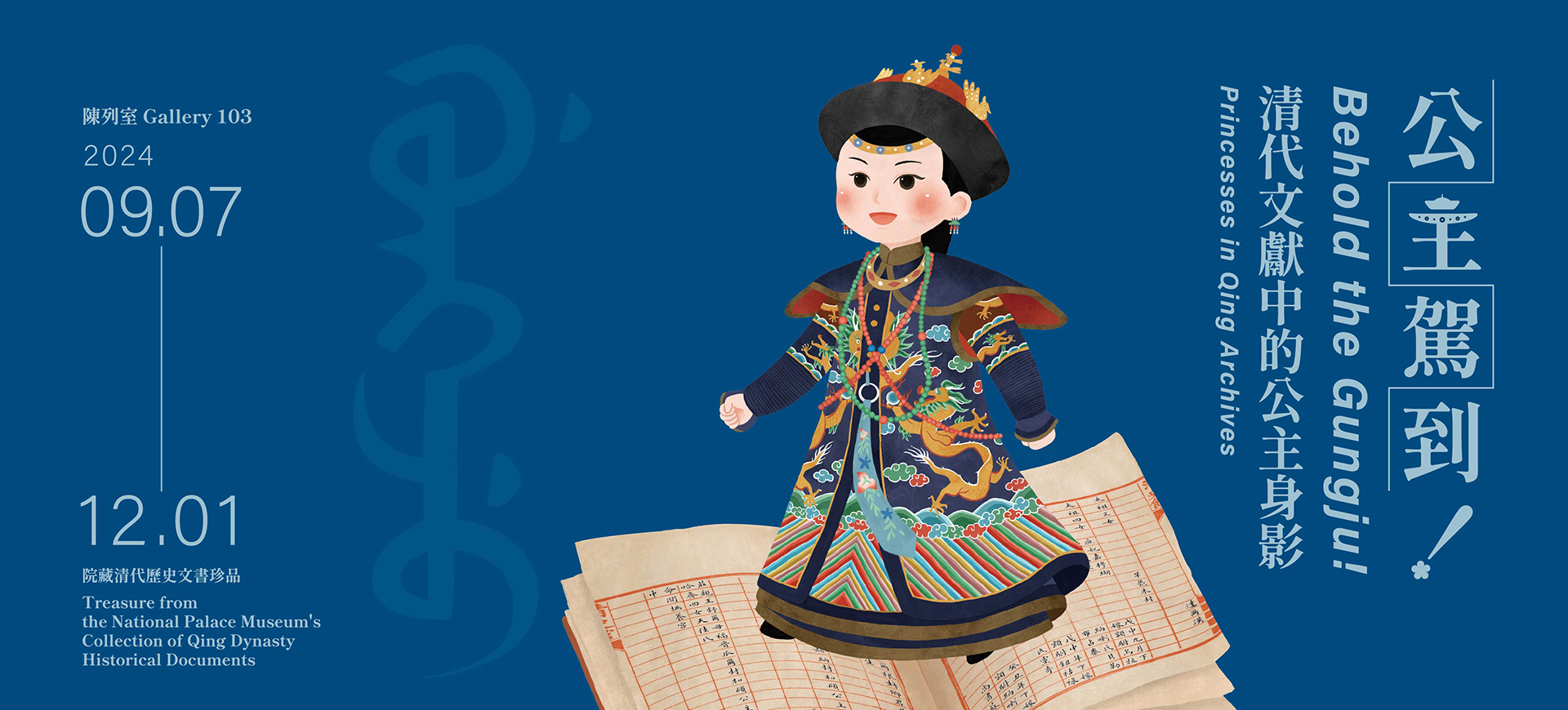The Marriage Mission
For many, marriage is a significant life event. For princesses, however, it was more like a vital mission to accomplish.
At many times throughout history, marriages were not born freely of love, but were strategic unions pursued for personal, familial, or national interests. The Qing Empire, with its diverse territories and multicultural population, also used it as a governing strategy.
Qing princesses were typically married off between the ages of 12 and 20. Though often overlooked in historical narratives, these princesses, who sacrificed their youth and lives, played a pivotal role in maintaining the stability of the empire and its political alliances.
-
Poem Commemorating Princess Hejing of the Frist Rank’s Wedding
From Collected Imperial Poems, Volume III
Written by the Qianlong Emperor
Manuscript, Wenyuan Pavilion Complete Library of the Four Treasuries edition, Qianlong period
故庫031027In 1770, the seventh daughter of Emperor Qianlong (Princess Hejing of the Frist Rank) married Lavan Dorji of Mongolia. Emperor Qianlong wrote a poem to commemorate the event, urging the princess to honor her in-laws and avoid being arrogant. The emperor also noted in the poem that the Qing dynasty’s matrimonial alliances differed from the traditional Chinese “heqin,” which were marriage alliances for peace; instead, neighboring tribes pledged allegiance to the Qing, establishing relationships akin to those of families and servants. This perspective highlights the importance and uniqueness of marriage policies for Manchu rulers to consolidate their imperial power and to connect with different regional populations. The princesses’ lives were thus inextricably linked to the political operations of the empire.
-
Biography of Prince Tsering of the Khalkha Seyin Noyan Mongols
Compiled by the Qing Imperial History Bureau
Late 18th century
故傳008144From the late 16th century, Nurhaci rallied Mongolian forces to conquer the Jurchen tribes and battle the Ming dynasty, with marriage alliances being one of the methods to establish such relationships. As a result, many Qing princesses married Mongols. In 1706, Ts’ering of the Khalkha Mongols married Emperor Kangxi’s 10th daughter (Princess Chunque of the First Rank), becoming one of the trusted Mongolian sons-in-law of the Qing dynasty. His capabilities were recognized by the Qing court, who sought to control the Khalkha Mongols through him and even made him the sole leader of the Sain Noyon Khan clan, establishing a new Qing influence in the regions north of the Great Wall.
-
Biography of Fulong'an
From Collected Biographies of Hasitun and Others
Drafted by Li Jinglian and transcribed by Chunqi
Qing State Historiography Institute draft edition, early 20th century
故傳007303The Manchus traditionally valued social statuses and kinship ties, and the nobility often established friendly relationships through marriage networks, stabilizing their statuses and interests. The Aisin-Gioro imperial family frequently married into the so-called “Eight Banners” noble clans such as the Gūwalgiya, Niohuru, and Tatara clans. At least 23 princesses married Manchu men, whose families were closely connected to the emperor. Examples in the Qianlong era in the 18th century include prominent clans such as the Fuca, Niohuru, and Heshen clans, representing cases of strategic marital alliances.
This biography of Fulong’an, the second son of Fuheng, mentions his marriage in 1760 to Emperor Qianlong’s fourth daughter, Princess Hejia of the Second Rank. Fulong’an held significant positions and enjoyed a prosperous career.
-
Record of the Kangxi Emperor's Execution of Wu Yingxiong and His Son
From Biographies of Treacherous Ministers
Compiled by the Qing Imperial History Bureau
Printed edition by Bansong Jushi, Liulichang, 19th century
故傳007658In the early Qing dynasty, the court conferred the titles of vassal kings to Han Chinese allies like Wu Sangui; arranged marriages between princesses and the Three Feudatories to consolidate loyalty; used Han Chinese to pacify anti-Qing forces in the south; and kept Han Chinese sons-in-law in the capital to monitor the regional vassal kings. Wu Sangui’s son, Wu Yingxiong, married Hong Taiji’s 14th daughter (later known as Princess Jianning or Kechun) in 1653, fathering children including Wu Shilin. According to the Biographies of Treacherous Ministers, after Wu Sangui rebelled in 1674, Emperor Kangxi ordered the execution of Wu Yingxiong and his son Wu Shilin. The princess, having lost her husband and children, did not fare well thereafter; however, she became a memorable figure as “Princess Jianning” in the martial arts novel The Deer and the Cauldron.
-
Accusation Against Fengšenyende for Poisoning a Princess
From Biography of Fengšenyende
Qing Imperial History Bureau draft edition, late 19th century
故傳011098In 1789, Emperor Qianlong’s 10th daughter, Princess Hexiao of the First Rank, married Hešen’s eldest son, Fengšenyende. In 1803, accusations against Fengšenyende including poisoning the princess’ food, were documented in a handwritten biography, which described the incident over four pages long, marking the most famous event in his life.
The official conclusion was that the allegations were false; however, given that his father was executed by Emperor Jiaqing, Fengšenyende likely harbored complex feelings when facing the emperor’s sister, Princess Hexiao. This case may reflect the unstated troubles and awkwardness inherent in political marriages, which official documents often do not explicitly record.


